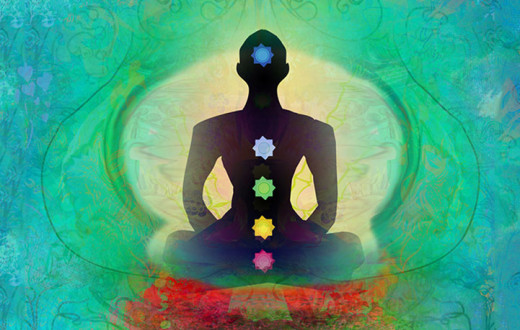
You have rightly said that it only appears to be real. In reality it is not.
I will give you a simple example to understand this. Look at a flowing river. Would you call it ancient or new? Try answering this question for yourself.
Now you would think, 'How can the river be both?' But then, that is how it is. The river has been in existence since ages, yet there is a constant flow of new and fresh water in it. Every moment the water is fresh. So in the same way, this world appears to be real and permanent, yet in reality it keeps changing every day. That is why it is not regarded as the truth.
What is the definition of truth? In principle, truth is called as 'Trikaalabaadhitam yad tat sat'. It means that truth is that which remains constant and unchanging through the three phases of time.
If you look at the world in light of this definition, then the world truly appears unreal. But that does not mean that it does not exist. It is just that it is not the same at all times and is constantly changing, yet it does exist.
Viparyaya (wrong understanding) is one of the modulations of the mind. It doesn’t stay too long. That’s why in Ashtanga Yoga (The Eight Limbs of Yoga) any one of the limbs will trigger the mind and say, ‘This is pramana viparyaya', meaning, it the wrong knowledge. This comes to one’s understanding.
If you have been judgmental, when you come out of being judgmental you say, ‘Oh, I have been judgmental’. Time will trigger that point in you.
There are two ways of coming out of Viparyaya:
1. Time
2. An expanded consciousness, when you are able to see, ‘What I am thinking, is it correct or not?’
The whole Nyaya Shastra is built on that. It is one of the Angas (limbs) of the Upangas (yoga). You have a certain understanding, but how do you know if it is right or not? So to know whether it is correct or not, they have given a whole process for it, which is called the Nyaya Darshana.
The Nyaya Shastra is the most fascinating treatise. It is to know or identify whether the means of knowledge is correct or not. It is to identify whether the understanding that you have is a reality, or just one of the games of your mind. They have given many examples and ways to find out. Some other time we’ll discuss the Nyaya Sutras.
Gautama’s Nyaya Sutras say, 'You see the sun rising and setting, but you know that the sun neither rises nor sets. Similarly, you have a beaker of water and you put a pen into it and it appears to be bent, but in reality it is not bent'.
It is a way to go beyond the perception.
Correct, that is why spirituality is a science. This is what people said thousands of years ago in the six darshanas (schools of thought).
The six darshanas are:
1. Samkhya (emphasizing on consciousness and matter)
2. Yoga (emphasizing on meditation, contemplation & liberation)
3. Nyaya (emphasizing on the sources of knowledge)
4. Vaisheshika (emphasizing on atomism)
5. Mimamsa (emphasizing on religion and ethics)
6. Vedanta (knowledge)
So, the darshanas are nothing but pure science. That’s why we say, 'Gyana vigyaana tripatma,’ knowledge and science, both are essential in life.
In India we never opposed science. We said, first know the five elements (Earth, Water, Fire, Air and Ether), this is science, and then go to the sixth element, i.e., the mind.
Nyaya is the method of knowing whether your knowing is correct or not.
Nowhere else in the world have people attended to this type of keen awareness, to see whether the knowledge one has is subjective knowledge or objective knowledge.
One is to analyze the object and then also see, who is knowing, and what is the quality of his consciousness. Is he drunk? Does he have jaundice? For a person who has jaundice everything appears yellow.
So, not just the object even the subject has been studied. This much depth and detail our ancient scriptures have. That is why they say, this is true and this is not true.
I also liked the picture and that’s why we have put it there. It is a picture of Kashi Vishalakshi. She has the son in one hand and the husband in the other. She also has a japa mala (rosary) and a kamandala (water pot).
Kamandala is symbolic of giving boons, and the japa mala is symbolic of meditation and knowledge. It is beautiful!
I liked it too and so decided to put it in our Vishalakshi Mantap. Vishalakshi means one who has a broad vision. The one who gives such a big vision is known as Vishalakshi.
In the 1960s and 70s there was only one channel called Doordarshan. There was no other option. Today, there are hundreds of channels. Like that this universe has many layers and knowledge is humongous. There is no end to knowledge.
Do you get all the channels in the same television or different ones?












































